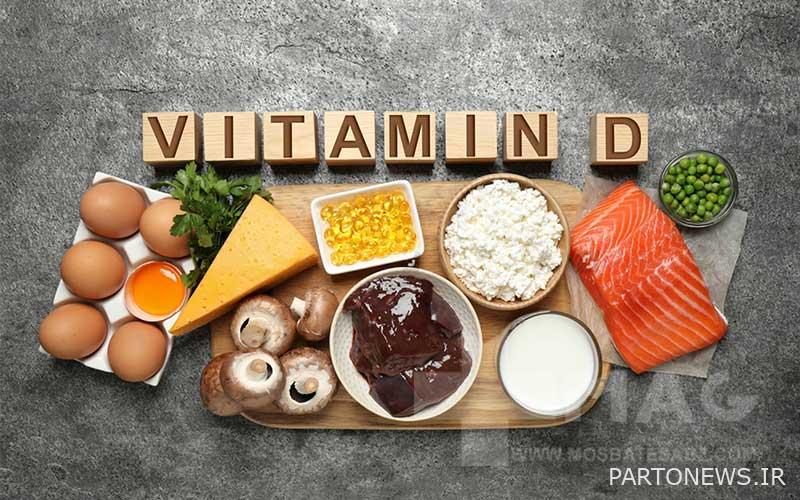7 nutrients that should be added to the daily diet of women

A sedentary lifestyle causes many health problems. In today’s world, many people suffer from various diseases due to nutritional deficiencies. The subject of our discussion in this article is nutrients for women’s bodies. What foods should be used to strengthen the immune system of women? What do you think is the best food for women’s body strength? Stay with us until the end of this article to introduce you to 7 nutrients that should be added to the daily diet of women.
The most important nutrients for women’s bodies
All women over the age of 20 should include the following nutrients in their daily diet:
Folic acid or folate
The human body needs folic acid or vitamin B9 to maintain heart health, improve nerve functions, muscle health, produce energy, digest food, prevent anemia, regulate appetite, maintain skin health, and help strengthen vision. Women who are planning to get pregnant are often advised to use folic acid tablets 3 months before conception. Folic acid is one of the nutrients for the body of women, the lack of which during pregnancy may cause congenital defects of the brain and spinal cord in the fetus.
Women over the age of 19 need 400 micrograms of folic acid daily. In case of pregnancy and breastfeeding, this amount reaches 600 and 500 micrograms per day, respectively.
The best dietary sources of folic acid are broccoli, peas, and dark green leafy vegetables such as spinach.
Consuming appropriate amounts of iron to strengthen women’s bones
Iron is one of the most important nutrients for the women’s body, which must be included in the daily diet of women. The best food to strengthen women’s bodies must contain sufficient amounts of iron. To maintain hormonal balance and transfer oxygen to body tissues, the mineral iron is essential. Iron deficiency leads to severe anemia and is associated with symptoms such as extreme fatigue, paleness and hair loss.
Adult women need 18 mg of iron mineral daily. This amount reaches 27 and 9 mg during pregnancy and breastfeeding, respectively.
When using iron tablets or foods containing iron, try to use vitamin C sources such as citrus fruits in order to better absorb this nutrient. The richest foods containing iron are: types of red and white meat, legumes and dark green leafy vegetables.
The importance of calcium consumption in the diet of women
Undoubtedly, one of the most important nutrients for women’s bodies is calcium. The human body needs sufficient amounts of calcium to have healthy bones, strong teeth, contraction and expansion of blood vessels, transmission of nerve messages and hormonal balance.
Women aged 19 to 50 need 1000 mg of calcium in their diet daily. This amount does not make a difference during pregnancy and breastfeeding. Women over 50 need 1200 mg of calcium daily.
Dairy products are one of the best sources of calcium. Calcium deficiency should be compensated by taking calcium tablets.
Vitamin D is one of the nutrients for women’s bodies
Vitamin D plays a very important role in strengthening the immune system of women. This vitamin is a very strong antioxidant that is effective in fighting free radicals. The action of vitamin D is more similar to the body’s hormones. When vitamin D is absorbed by the liver and kidney in its most biologically active form, that is calciferol It helps the intestines absorb more calcium from food. So vitamin D is very important in bone health. Nutritious foods for weak bodies of women who have a weak immune system must contain this vitamin.
Adult women need 15 micrograms or 600 IU of vitamin D daily.
The best source of vitamin D is sunlight. You can also find this vitamin in some foods such as fatty fish. Vitamin D deficiency is very common among women in our country. In these cases, vitamin D tablets must be used under the supervision of a doctor.

Vitamin E for women
Vitamin E, as one of the most important nutrients for women’s bodies, has a great antioxidant role and is very effective in strengthening the immune system, hormonal balance, and helping to reduce inflammation.
Women need 15 mg of vitamin E in their diet daily. This amount does not change during pregnancy, but it reaches 19 mg during breastfeeding.
To supply vitamin E needed by the body, it is better to use legumes, flax seeds and vegetable oils. Also, if you have symptoms of vitamin E deficiency, take vitamin E tablets to compensate for this deficiency.
Magnesium to strengthen women’s bones
The mineral magnesium helps the function of various enzymes involved in protein synthesis, blood pressure regulation, blood sugar control, and nerve and muscle function. In order to reduce muscle cramps, many female or male athletes go to buy magnesium tablets.
Women aged 19 to 30 and women aged 31 to 50 (and older) need 310 and 320 mg of magnesium daily, respectively.
Bananas, avocados and green leafy vegetables are the best sources of magnesium and the best nutrients for women’s bodies.
The role of omega-3 in women’s diet
If you are looking for the best nutrients for women’s bodies, you should not forget omega-3 fatty acids. Omega-3 plays a role in maintaining the health of the heart, blood vessels, brain, eyes, lungs, and hormones, and since the human body cannot produce it, it must be obtained from the diet.
Omega-3 is neither a vitamin nor a mineral, but it is one of the nutrients that are necessary to maintain the structure of the body’s cells, and its deficiency disrupts the functioning of various body systems. Research has shown that sufficient amounts of omega-3 in the body can even be effective in preventing the symptoms of premenstrual syndrome in women.
Women aged 19 to 50 need 1.1 grams of omega-3 daily.
Salmon and fatty fish in general, olive oil and avocado are the best sources of omega-3 in the diet. Omega 3 deficiency should be compensated by buying and consuming omega 3 tablets.
Recommended amount of nutrients in the daily diet of women
In the table below, we have given the recommended amount of nutrients for the body of women:
| Nutrient name | Recommended amount for women | Recommended amount during pregnancy | Recommended amount during breastfeeding |
|---|---|---|---|
| folic acid | 400 micrograms | 600 micrograms | 500 micrograms |
| iron | 18 mg | 27 mg | 9 mg |
| Calcium | 19 to 50 years: 1000 mg Over 50 years: 1200 mg | 1000 mg | 1000 mg |
| Vitamin D | 15 micrograms | 15 micrograms | 15 micrograms |
| Vitamin E | 15 mg | 15 mg | 19 milligram |
| magnesium | 19 to 30 years: 310 mg 31 to 50 years: 320 mg | 19 to 30 years: 350 mg 31 to 50 years: 360 mg | 19 to 30 years: 310 mg 31 to 50 years: 320 mg |
| Omega 3 | 1.1 grams | 1.4 grams | 1.3 grams |
What is the best food to strengthen the body?
The best food for strengthening the body is food that strengthens the immune system of women and men. It is better to use foods that contain nutrients for the body of women and men. Some of these foods include:
- Fruits and vegetables such as: citrus fruits, spinach, broccoli, carrots
- Proteins include types of lean meat, fish, shrimp, legumes, and eggs
- Healthy carbohydrates like whole wheat bread and brown rice
- Healthy fats like olive oil and avocado oil
Try to use foods that contain the listed foods every day to strengthen your immune system. The best nutrients for women’s bodies are found in foods that include all beneficial food groups.
One last thing about nutrients for women’s bodies
We mentioned the most important nutrients for women’s bodies in this article from the Green Positive Online Pharmacy magazine. Except for the mentioned cases, all other vitamins and minerals, such as vitamin A or zinc, should be included in the daily diet of women in order to help strengthen women’s bones and to prevent nutritional deficiencies from jeopardizing the health of the body. Whether women are in reproductive age or in menopause, in any case, they should pay attention to their healthy diet and avoid consuming processed and high-fat foods and limit the consumption of sugar and salt.
Please rate this article
[مجموع: ۱ میانگین: ۵]


